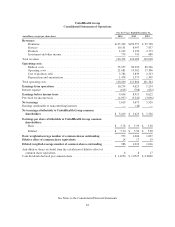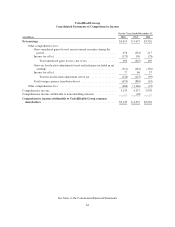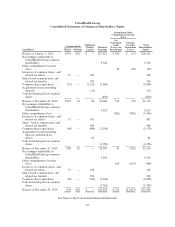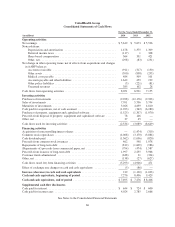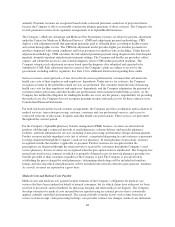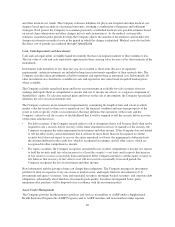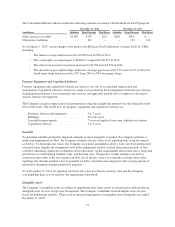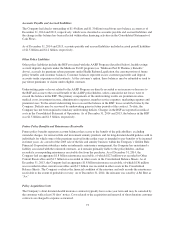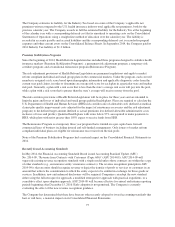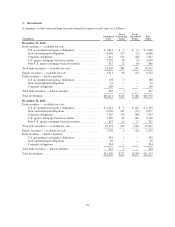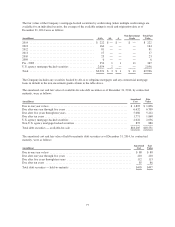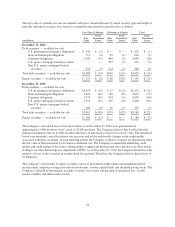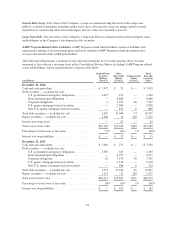United Healthcare 2014 Annual Report Download - page 74
Download and view the complete annual report
Please find page 74 of the 2014 United Healthcare annual report below. You can navigate through the pages in the report by either clicking on the pages listed below, or by using the keyword search tool below to find specific information within the annual report.
The Consolidated Balance Sheets include the following amounts associated with the Medicare Part D program:
December 31, 2014 December 31, 2013
(in millions) Subsidies Drug Discount Risk-Share Subsidies Drug Discount Risk-Share
Other current receivables .......... $1,801 $719 $20 $881 $425 $ —
Other policy liabilities ............. — 302 — — 152 214
As of January 1, 2015, certain changes were made to the Medicare Part D individual coverage levels by CMS,
including:
• The initial coverage limit increased to $2,960 from $2,850 in 2014.
• The catastrophic coverage begins at $6,680 as compared to $6,455 in 2014.
• The annual out-of-pocket maximum increased to $4,700 from $4,550 in 2014.
• The discount on prescription drugs within the coverage gap increased to 55% from 52.5% in 2014 for
brand name drugs and increased to 35% from 28% in 2014 for generic drugs.
Property, Equipment and Capitalized Software
Property, equipment and capitalized software are stated at cost, net of accumulated depreciation and
amortization. Capitalized software consists of certain costs incurred in the development of internal-use software,
including external direct costs of materials and services and applicable payroll costs of employees devoted to
specific software development.
The Company calculates depreciation and amortization using the straight-line method over the estimated useful
lives of the assets. The useful lives for property, equipment and capitalized software are:
Furniture, fixtures and equipment ........... 3to7years
Buildings .............................. 35to40years
Leasehold improvements .................. 7years or length of lease term, whichever is shorter
Capitalized software ...................... 3to5years
Goodwill
To determine whether goodwill is impaired, annually or more frequently if needed, the Company performs a
multi-step impairment test. First, the Company estimates the fair values of its reporting units using discounted
cash flows. To determine fair values, the Company must make assumptions about a wide variety of internal and
external factors. Significant assumptions used in the impairment analysis include financial projections of free
cash flow (including significant assumptions about operations, capital requirements and income taxes), long-term
growth rates for determining terminal value, and discount rates. Comparative market multiples are used to
corroborate the results of the discounted cash flow test. If the fair value is less than the carrying value of the
reporting unit, then the implied value of goodwill would be calculated and compared to the carrying amount of
goodwill to determine whether goodwill is impaired.
As of December 31, 2014, no reporting unit had a fair value less than its carrying value and the Company
concluded that there was no need for any impairment of goodwill.
Intangible Assets
The Company’s intangible assets are subject to impairment tests when events or circumstances indicate that an
intangible asset (or asset group) may be impaired. The Company’s indefinite lived intangible assets are also
tested for impairment annually. There were no material impairments of intangible assets during the year ended
December 31, 2014.
72



